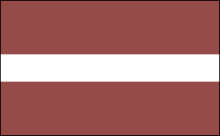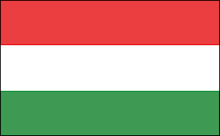Viljandi to niewielkie miasto (ponad 20.000 mieszkańców) na południu Estonii. Istniało już w XIII w. na miejscu starego grodu Estów. Prawa miejskie otrzymało w 1283, kiedy osiedlili się tu Krzyżacy. Viljandi było członkiem Hanzy, mimo iż na przestrzeni wieków należało do innych państw: Polski do XVII w., Szwecji do XVIII w., potem do Rosji. Dziś to dość senne miasteczko, ośrodek kulturalny i handlowy w okolicy.
Viljandi is a small city (20,000 inhabitants) in southern Estonia. It has already existed in the XIII century on the site of the old city of Estonians. It received city rights in 1283, when the Teutonic Knights settled here. Viljandi was a member of the Hanseatic League, even if it belonged to other countries for centuries: Poland to the XVII century, Sweden to the XVIII century, then to Russia. Today it is quite a sleepy town, cultural and commercial center in the area.
Uus Street
Zabudowa jest typowa, drewniana.
Typical, wooden buildings
Ulica Koidu
Koidu Street.
Budynek Viljandi Maagümnaasium - zespołu szkół. Liczy sobie 133 lata.
Viljandi Maagümnaasium building - a 133 year old school
ulica Jacobseni
Jacobseni Street
Widok na jezioro Viljandi - zimą na tyle zamarznięte, że można po nim jeździć samochodem. Latem to ośrodek sportów wodnych.
A view on Viljandi lake - in winter it's frozen so that the cars can go across and in the summer it's the centre of water sports.
Na wzgórzu nowsza część miasta, pamiętająca czasy ZSRR - komunistyczne bloki i kombinat.
On the hill there's newer part of the town, with Soviet blocks of flats and a factory.
Szkoła muzyczna
Music school
Grand Hotel
Kamienica na rynku
Houses on the main square
Rynek zabudowany jet z rzadka mało pięknymi kamienicami.
A main square with some quite ugly buildings.
Pomnik Carla Roberta Jacobsona, założyciela lokalnej gazety Sakala, czołowego pisarza estońskiego XIX w.
Carl Robert Jacobson's monument. He was the owner of popular newspaper called Sakala and main Estonian writer of the XIX c.
Pomnik Johana Kolera, architekta, malarza i rzeźbiarza.
Johan Koler's monument. He was an architect, sculpturer, painter.
Lokalne muzeum
Local museum
Wieża ciśnień
Watertower
Ratusz
Town Hall
Nowoczesna rzeźba pod ratuszem
Modern sculpture near the Town Hall
Fontanna
Fountain
kościół św. Jana od tyłu
St. John's church from the back.
Pomnik Johana Laidonera, jednego z wodzów estońskich, twórców niepodległej Estonii po I wojnie światowej. Zmarł w radzieckim więzieniu.
Johan Laidoner's monument. he was one of the makers of independent Estonia after the I WW. He died in Soviet prison.
Dom kultury.
House of Culture
Zamek Krzyżacki z XIII w., zniszczony przez wojsko polskie.
Teutonic Knights' castle from the XIII c., destroyed by Polish Army.
Most wiszący
Hanging bridge
Muzeum Viljandi
Viljandi Museum
Główna ulica miasta.
The main street
Za teatrem Ugala z 1920 wieża kościoła św. Pawła
Ugala Theatre from 1920 and the tower of St. Paul's church behind.
Kościół św. Jana
St. John's church
Dziwaczne drzewo w parku.
Strange tree in the park.










































































Brak komentarzy:
Prześlij komentarz